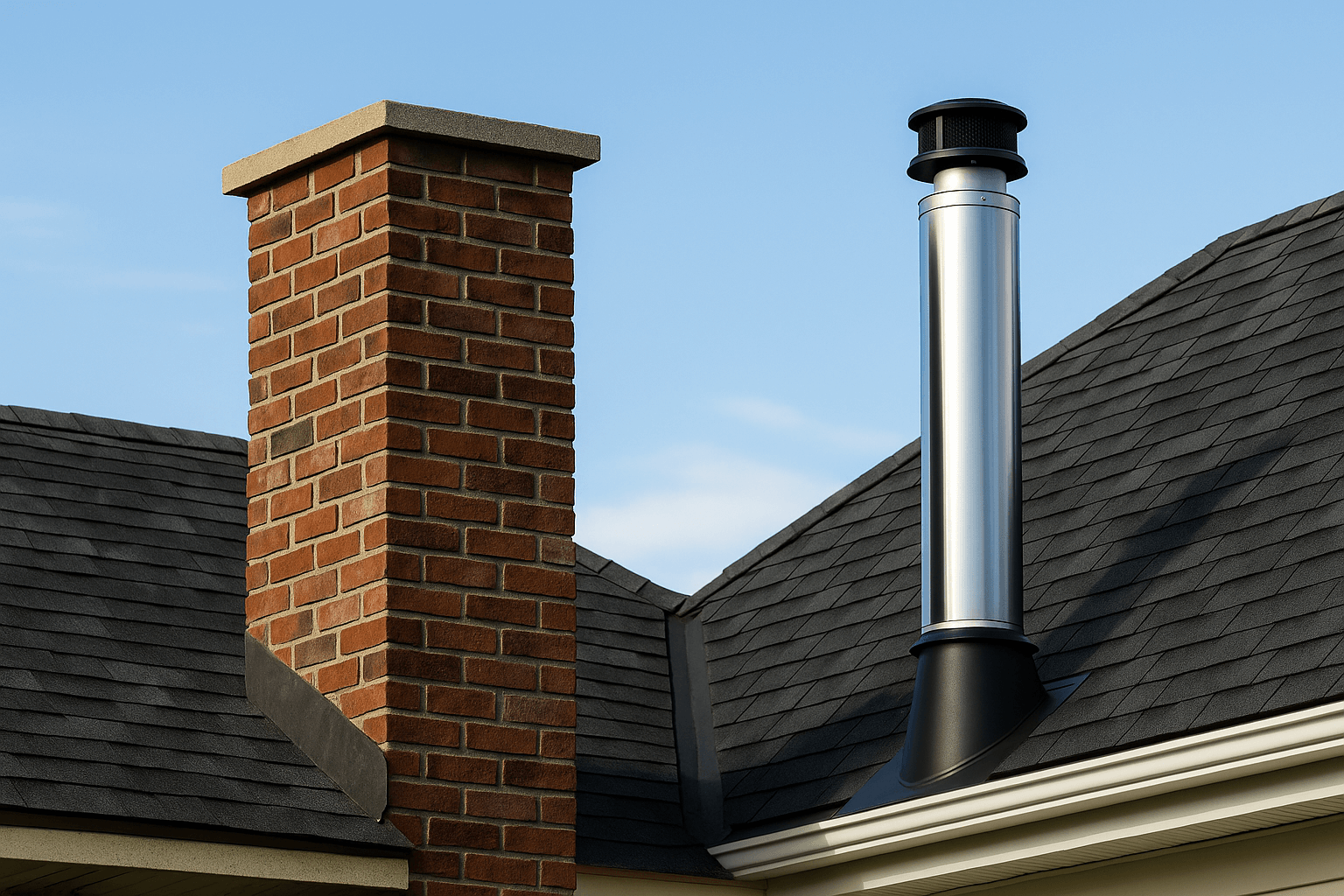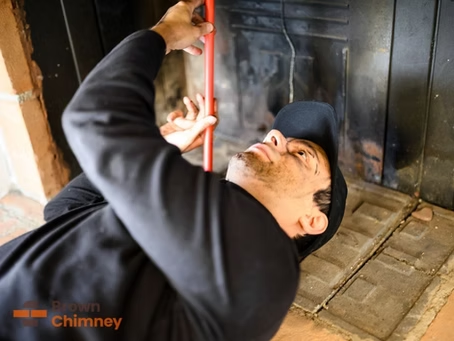Masonry vs. Prefab Chimneys: Which One’s Right for Your Home (and Budget)?
informed decisions, maintain your property, and ensure long-lasting protection.

When it comes to choosing a chimney, homeowners usually face two options: a traditional masonry chimney or a factory-built (prefabricated) system. Both can be safe, code-compliant, and attractive, but the differences in cost, lifespan, and upkeep can significantly affect your decision.
This guide breaks down what you’re actually getting with each type, what it costs to own one, and how to choose the right fit for your home and lifestyle.
At a glance: Masonry vs. Prefab
Both systems require annual inspections under National Fire Protection Association 211 standards and cleanings based on use.
Masonry chimneys explained
Masonry chimneys are the most common chimney type, and they’re well-loved for their durability and aesthetic appeal. Here are the components of a standard masonry chimney:
● Exterior structure: brick, stone, or block tied together with mortar
● Crown and cap: the top protection against rain, snow, and debris
● Liner: clay tiles or stainless steel that carry smoke safely upward
● Flashing: keeps water from seeping where the chimney meets the roof
Prefab chimneys explained
Prefab chimneys are tested, factory-made systems designed to work as a matched set. Commonly called “Class A” or “factory-built” chimneys, they’re usually stainless steel pipes with insulation, installed inside a chase or as a standalone.
Code and safety essentials
Regardless of system type, certain rules apply. All chimneys need to abide by the 3-2-10 Chimney Rule as dictated by the International Code Council. This states that chimneys must extend 3 feet above the roof penetration and 2 feet higher than anything within 10 feet.
The National Fire Protection Association NFPA 211 recommends yearly checkups, with sweeping as needed according to rules set by the Chimney Safety Institute of America. Prefab chimneys must also be installed exactly as their manuals specify, meaning there should be no mixing of brands or aftermarket parts.
How to decide: a practical guide
Is this new construction or a remodel?
● New build: Masonry is ideal. It needs a dedicated concrete footing (below the frost line) and adds several thousand pounds of load. Build time is typically 3 to 7 days, plus the cure time for mortar and crown.
● Remodel or limited structure: Prefab (factory-built) shines. A UL-listed Class A chimney threads through floors and the attic with roughly 2 inches of clearance to combustibles, anchors with support brackets, and usually installs in 1 to 2 days. For these builds, no new footing is required.
How often will you burn?
● Occasional (less than 20 fires per season): Prefab is cost-effective. The lighter system meets code, looks great, and keeps upfront costs down.
● Regularly or seasonal (several nights per week): Masonry’s thermal mass stabilizes draft and radiates residual heat. If you prefer prefab, choose one with a Class A fire rating and plan on strict annual inspections because heavy use accelerates wear.
Is aesthetics or resale a top priority?
● Masonry: Best for custom proportions, stone or brick detailing, and long-term curb appeal. Expect a higher appraisal value if masonry is treated as a strong selling point.
● Prefab: You can still get a high-end look by housing the pipe in a masonry chase, but you need to follow the unit’s manual. Many listed fireplaces limit veneer thickness and mandate non-combustible zones around openings.
What’s your budget and timeline reality?
● Install costs (typical ranges): Masonry often prices higher than prefab; prefab frequently lands in the lower band for the same height. Complex crowns, tall scaffolding, or decorative stonework push masonry up; long offsets, roof work, or custom chase cladding can push prefab up.
● Time to use: Prefab can be same-week. Masonry, however, needs building and curing. Sometimes, permitting takes longer.
How do you feel about maintenance?
● Masonry: Plan for annual inspection/sweep, periodic tuck-pointing, crown sealing or replacement every 5 to 10 years (exposure-dependent), and waterproofing as needed.
● Prefab: Expect annual inspection and sweeping, cap screen cleaning (bird nests are common in older air-cooled terminations), and chase cover replacements over the life of the unit. After a chimney-fire event, many listed systems require component replacement rather than repair.
Do you want long-term flexibility?
● Masonry: Highly adaptable. Future fuel changes or appliance swaps are often solved with relining (size, material, insulation).
● Prefab: Changing fuels or appliance type typically means replacing the fireplace or chimney system, not just “adapting” it.
Choose masonry if you’re building new, want a statement hearth, burn often, and value century-scale durability with proper water management. However, choose prefab if you’re remodeling, on a tighter budget and timeline, or need a safe, listed system with predictable clearances and minimal structural changes.
Takeaway: choosing the best type of chimney for you
There’s no one-size-fits-all answer. Masonry chimneys are built to last and add timeless charm, while prefab systems deliver performance at a lower upfront cost. What matters most is choosing the option that fits your budget, your home’s structure, and how you actually plan to use your fireplace.
Either way, the smartest move is to book a professional inspection with a team like Brown Chimney. From there, you’ll know exactly what you’re working with and how to make your chimney safe, efficient, and ready for years of fires to come.
RELATED ARTICLS

.webp)
Schedule an Inspection Now
with expert chimney care.







